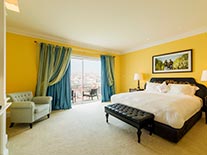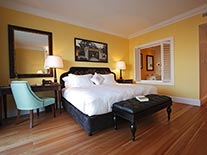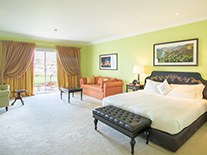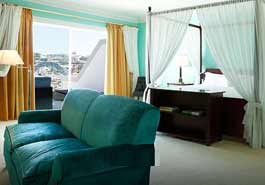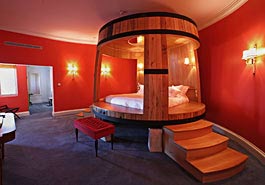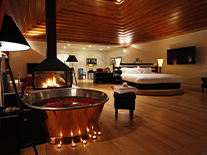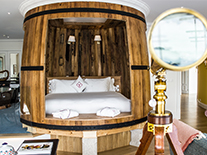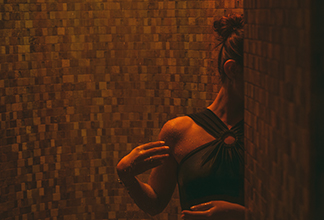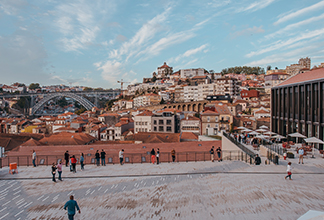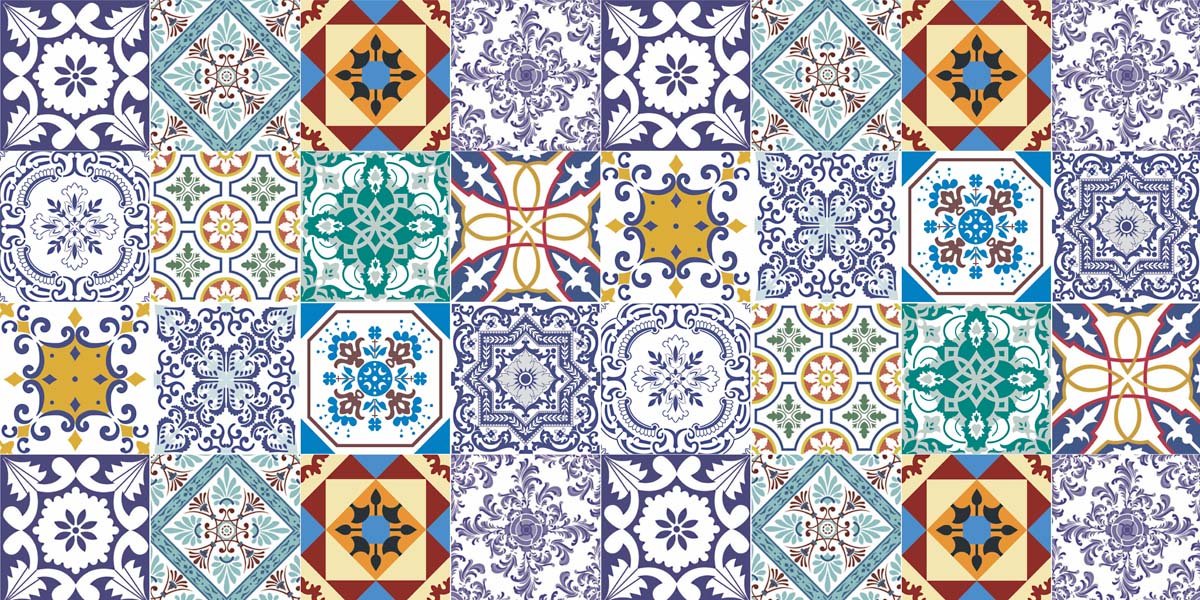Born under Egyptian origin, ceramic decoration was introduced in the Iberian Peninsula by the Arabs during the 13th century, as the term "azulejo” derived from the Arabic word "al-zulaich", which means small polished stone. Initially, these were mosaics cut with pliers and based on a larger piece of single-colour glazed clay.
In Portugal, the azulejo began by being manufactured with specific characteristics predominant in the Portuguese culture and history. Since then, its use became so widespread that it is now very difficult to find any relevant historical building from this period (church, palace or manor house) that does not have a façade covered in azulejo tiles.
Although the basic principles were kept, its technique has evolved enormously, allowing its application in the manufacture of various components used in the most advanced technologies. Next, we will present a brief history on the evolution of the azulejo in Portugal.
The Azulejo
The azulejo is one of the strongest cultural expressions in Portugal and one of the most original contributions of the creativity genius of the Portuguese in world culture.
Over the years, the azulejo has largely overtaken its mere utilitarian or ornamental function and reached the transcendent status of Art as a poetic intervention in the creation of architecture and cities.
Explicitly, the term azulejo is the Portuguese word to designate a square ceramic plate in which one of the sides is painted and glazed. Such art form is widely used in countries such as Spain, Italy, Holland, Turkey, Iran and Morocco, but one can say that it assumes in Portugal a special relevance in the universal context of artistic creation due to:
1. The longevity of its use.
2. Its tiling method, as an element that structures buildings and completes architecture through large coating inside the building walls or in exterior façades.
3. The way it has been interpreted throughout the centuries, not only as decorative art but also as a support for every style renewal and as a historical record.
Slowly but surely, the azulejo acquired over the centuries an even greater influence by becoming an identifying element of the Portuguese culture sustained for the following reasons:
1. The capacity of dialogue between European, Arab and Indian cultures.
2. The use of a conventionally poor material such as the tile as means of aesthetic qualification of interior spaces in significant buildings and urban spaces.
Its history
The first known azulejos in Portugal, used as a monument wall decoration, were Spanish-Moorish tiles imported from Seville, around the year 1503. The development of ceramics in Italy and the possibility of painting directly onto the tile, using the majolica technique, furthered its composition and usage with different elements representing historical or decorative moments.
At the time, there were orders placed in Flanders directly from Portugal, however, it was the arrival of Flemish ceramists to Lisbon that saw the initiation of a proper Portuguese production from the second half of the sixteenth century.
Patterned Azulejos
Once the aesthetical taste for monument ceramic titles in churches and palaces became a trend in Portugal, the commissioning of great single compositions bespoke to each space became very expensive, which led to more frequent choice of repetitive tiles (or patterned tiles).
By the end of the sixteenth century and the beginning of the seventeenth century, compositions of chequered and plain coloured titles were patterned by creating decorative meshes on the walls. Although these azulejos were more affordable, their tiling was complex and slow, which meant it continued to be an expensive process, leading to its gradual demise.
Patterned Azulejos produced in large quantities and easy to apply, were more often used, firstly in repetitive modules with 232 azulejos, and afterwards in larger modules that reached 12,312 azulejos, generating strong diagonal patterns.
In any of these uses of patterned and glazed titles, the use of bevels and bars was essential for effective integration of architectural contours.
The figurative diversity in the 17th century
Since the figurative tiles were designed in harmony with the premises, sacred or state, to which they were destined, the real repertoires of engravings were produced in the workshops in order to please the various azulejos’ orders.
Religious, hunting, war, mythological and satirical scenes were transposed into tiles and interpreted in free colour by craftsmen without academic training, applied to large architectural surfaces or, on a smaller scale, replacing the oil painting of European tradition. Consequently, the tile gained an increasing relevance in Portuguese architecture.
The Church commissioned small single panels with images of saints, symbolic and religious narratives, still in naive painting when compared to the great religious cycles of the following century.
On the other hand, the nobility was commissioning azulejos with profane scenes, to decorate new palatial premises that were built in Lisbon and throughout the country after the Restoration of the Independence from the Spanish occupation in 1640.
The Masters cycle in the 18th century
At the beginning of the eighteenth century, the azulejo painters had progressed in their status, becoming renowned artists and even signing their panels.
The precursor of this movement was the Spanish artist Gabriel del Barco, who worked in Portugal in the late seventeenth century, introducing a taste for the most exuberant decorative wrapping, and a painting freed from the rigorous sketch drawings.
These innovations made room to other artists, initiating a golden period in the history of the Portuguese azulejos – acclaimed as the Masters Cycle.
Already in the eighteenth century there was an unprecedented increase in the manufacture of azulejo tiles, which was also due to large orders coming from Brazil. In an extension of the Masters Cycle, some painters such as Nicolau de Freitas, Teotónio dos Santos or Valentim de Almeida detached themselves by the quality of their work.
The azulejo façades of the 19th and 20th centuries
In the second half of the nineteenth century, the lower cost pattern azulejo covered thousands of façades, produced by factories based in Lisbon — Viúva Lamego, Sacavém, Constância, Roseira — and in Oporto and Gaia — Massarelos, Devesas.
Using semi-industrial or industrial techniques, allowing a faster and more rigorous production, the façades with pattern tiles and frames bordering doors and windows were now typical features in the colour and light variations of the urban identity in Portugal.
Primarily developed in the cities of Oporto and Lisbon, two trends were defined: in the north the use of pronounced embossments as a characteristic of the volume and contrast of light and shadow, and in the south plain patterns of ancient memory were kept for an almost ostentatious exterior application on the façades.
Nevertheless, in the 20th century in Oporto, the painter Júlio Resende had been developing since 1958, an important ceramic activity in articulation with architectural modern projects, from which have resulted figurative azulejo compositions and ceramic plates leading to his majestic panel Ribeira Negra, in 1985.
From this period, several artists stand out, such as Rafael Bordalo Pinheiro, with diversified productions, and Jorge Barradas, who was a real promoter of the renovation in the field of ceramics and azulejos. In the middle of the century, Maria Keil performed a vast work for the first Lisbon tube stations, besides the magnificent works by Júlio Resende, Júlio Pomar, Sá Nogueira, Carlos Botelho, João Abel Manta and Eduardo Nery, among others.
In order to safeguard and study the art of Portuguese azulejo, the Museu Nacional do Azulejo, in Lisbon was created.
